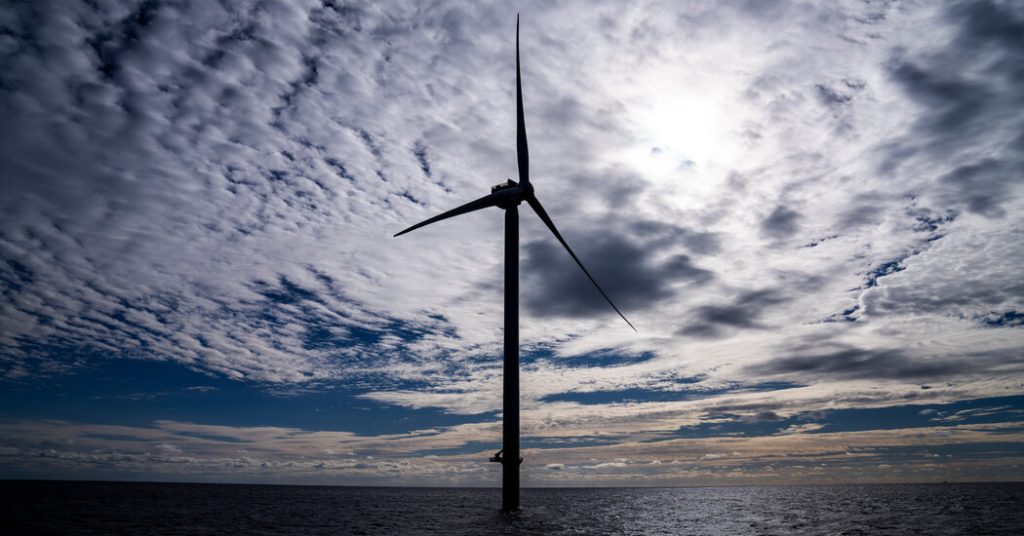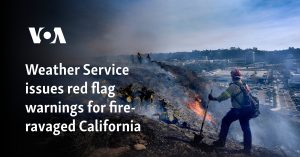On the heels of the hottest year in recorded history, one that brought the planet to a dangerous temperature threshold, President Trump effectively told the world on Monday that the United States is out of the climate fight.
Hours after his inauguration, Trump signed a barrage of executive orders to dismantle Joe Biden’s agenda on climate and clean energy. The orders propel dozens of actions, including eliminating programs aimed at protecting communities disproportionately affected by pollution and demanding an end to protections for a tiny fish in California that Trump blames for water shortages in the state.
Trump also announced a national energy “emergency” that could unlock authority to suspend environmental regulations and speed permits for mining, drilling, pipelines and natural gas export terminals.
Collectively, the executive orders put the United States on a path to increasing production of coal, oil and gas at a time when scientists say governments must rapidly pivot away from fossil fuels, the burning of which is dangerously heating the planet.
But there is little Trump can do simply with the stroke of a pen. Most of his orders will require that federal agencies repeal regulations, a time-consuming process. Environmental groups also are expected to file lawsuits, which could slow or stop some of Trump’s agenda.
Still, here are three major orders that could have far-reaching consequences.
Withdrawing from the Paris Agreement
Trump announced yesterday that the U.S. would withdraw from the Paris Agreement, the pact among almost all nations to fight climate change. His move solidifies what most of the world already knew: America is an unreliable partner on climate change.
Under the Paris Agreement rules, it will take one year from the day Trump transmits a letter to the United Nations, which he signed Monday, until the U.S. is formally out of the accord. But it signals an immediate shift in which, for at least the next four years, America will disregard global efforts to curb carbon emissions.
America’s fickleness on climate is not unexpected. After all, the U.S. pulled out of the pact during the last Trump administration. Before that, George W. Bush left a different climate treaty, the Kyoto Protocol, which had been negotiated by his predecessor, Bill Clinton.
But climate advocates said this latest reversal could not come at a worse time.
“The reality remains that unless the world collectively steps up its efforts,” said Kaveh Guilanpour, vice president of international strategies at the Center for Climate and Energy Solutions, an environmental group, “the impacts of climate change will become increasingly severe and frequent, and will be felt by an increasing number of people in all countries, including in the United States.”
Targeting wind power
“We aren’t going to do the wind thing,” Trump said Monday. Minutes later he signed a sweeping order that seeks not only to stop new offshore wind lease sales but also to potentially “terminate or amend” existing leases.
The Biden administration pushed the expansion of wind energy and approved 11 commercial-scale wind farms in the Atlantic Ocean. Industry leaders said terminating those projects or even threatening them could risk billions of dollars. It also throws into question the renewable energy targets that several Eastern states had set.
The executive order calls on the interior secretary to review wind leasing and permitting practices for federal waters and lands, and to consider the economic impact of wind on wildlife.
Regulating emissions
Buried deep inside Trump’s order on “unleashing American energy” is a directive that would not just end climate regulations, but would also make sure no future administration could ever curb dangerous emissions from fossil fuels.
The order calls on the administrator of the Environmental Protection Agency to make a recommendation within 30 days on the “legality and continuing applicability” of what has come to be known as the endangerment finding.
It stems from a 2007 Supreme Court case, Massachusetts vs. E.P.A., in which the court found the agency can regulate greenhouse gas emissions because they qualify as air pollutants.
Two years later, under former President Barack Obama, the E.P.A. concluded that six greenhouse gases, including carbon dioxide and methane, are a threat to human health and welfare, and must be regulated under the Clean Air Act.
That 2009 legal decision, known as the endangerment finding, is the legal backbone for almost all federal climate policy, and as long as it stands the E.P.A. will be obligated to address climate change in some manner. Revoking it has been the holy grail of climate denial groups. Project 2025, a set of conservative policy proposals spearheaded by the Heritage Foundation, a think tank, also called for revisiting that finding.
Read more:
Airborne lead and chlorine levels soared as L.A. wildfires raged
At the height of the Los Angeles County wildfires, atmospheric concentrations of lead, a neurotoxin, reached 100 times average levels even miles from the flames, according to early detailed measurements obtained by The New York Times. Levels of chlorine, which is also toxic at low concentrations, reached 40 times the average.
The spiking levels underscore the added danger from wildfires when cars, homes and other structures burn, researchers said. Lead is often present in paint and pipes used in older homes, while chlorine and other chemicals are generated when plastic melts or combusts. — Hiroko Tabuchi and Mira Rojanasakul
More on the L.A. fires and pollution risks:







